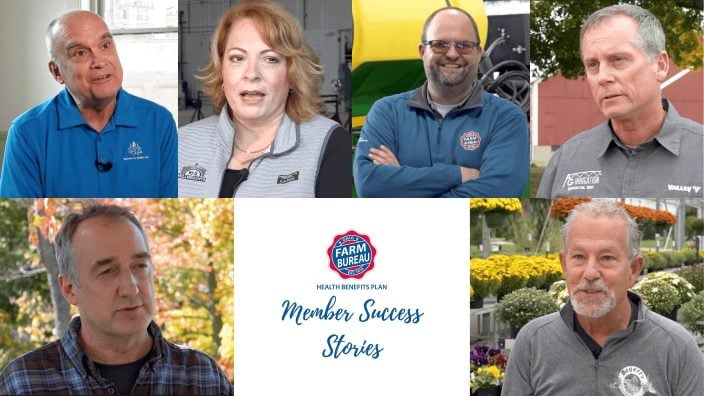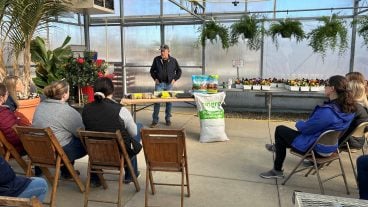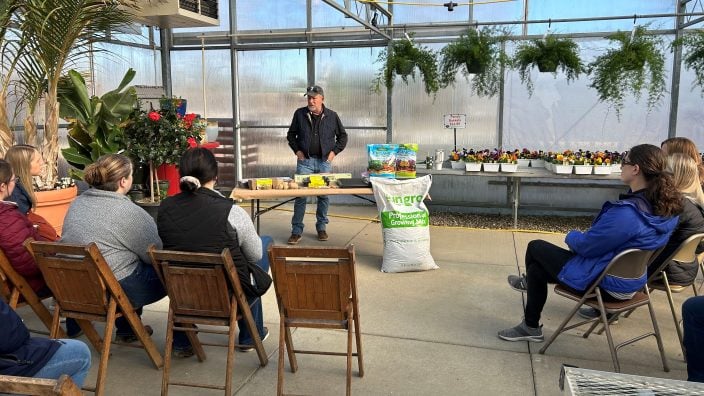Farmer’s Guide to Trucking Regulations available to Ohio Farm Bureau members
The guide includes a farm driver checklist, overview of state and federal regulations and exemptions, CDL qualifications and more.
Read More
It’s turned into another one of those strange springs to get crops planted in this area. Back in April, we had some warm, even hot days, to work up the soil and get a little bit of corn planted. Then it turned too wet and cold to do any field work.
As I have often said, we are now a grain-growing area. It has been a dramatic change from small dairy farms on every road to large fields and corn and soybeans planted. We’re expected to plant more than 19,000 acres of corn and more than 27,000 acres of soybeans in the county. But that depends on cooperation from the weather.
Very little field work was done so far in May because it has been too wet and cold, and too cold for corn planted in April to germinate and grow. Some that did make it through the ground looks pale and spindly. It takes soil temperatures of 50 degrees and higher for good germination and growth.
Back on Mother’s Day, some areas had snow squalls, enough to cover the ground. That is not good growing weather. Farmers can be ready and wanting to get in the field but can’t do much without help from Mother Nature.
Many farmers have big planting equipment and can get a lot of acres in the ground in a short time with good planting conditions. As you see, so much depends on the weather.
Then there is the price situation. Recently, corn has been running over $7 a bushel and soybeans over $15 a bushel. What has been causing prices to be that high and what will they be like in the fall? That depends on conditions such as the growing season and the demand next fall.
Drought in South America, especially Brazil, and some areas in the corn belt of the western United States has reduced the available supply for export. China has been buying record amounts of both corn and soybeans to feed an expanding swine herd. They would like to become self-sufficient as far as grain supply is concerned but have a ways to go.
Their grain-growing capacity needs to be modernized, fields combined and better equipment to be able to grow what they need. Their cumbersome communistic society makes change slow and hard to accomplish.
In this country, we have the wet conditions locally. But some areas in the West have been experiencing drought conditions. For example, some South Dakota growers are saying that it is too dry to try to plant. They wait for some good rains. Other Corn Belt areas of the West are having the same problem.
As I have said in the past, the Chinese market for our corn is an erratic one. The supply of both corn and beans coming from South America also can be uncertain. A high percentage of their beans go for export.
We have an interesting situation locally in which substantial acres of our soybeans are grown for export to Japan. Growers plant food-grade soybeans. When they are harvested, special care is given to them to be sure they are kept clean. After harvest, they are cleaned some more, bagged and put on pallets for direct shipment to Japan. While they take extra work, it is a good market and local suppliers want to keep it.
Over the years, I have watched the change in Trumbull County from a dairy county to a grain-growing area. It has been interesting to watch.
Submitted by John Parker, professor emeritus, The Ohio State University and a local writer for Farm Bureau.
OFBF Mission: Working together for Ohio farmers to advance agriculture and strengthen our communities.


The guide includes a farm driver checklist, overview of state and federal regulations and exemptions, CDL qualifications and more.
Read More


Katie Share of Columbus has been named ExploreAg and Youth Development Specialist for Ohio Farm Bureau.
Read More

Mary Klopfenstein of Delphos has been named Young Ag Professional and Ag Literacy Program Specialist for Ohio Farm Bureau.
Read More

The plan has been updated to give sole proprietors access to more rate stability and a smart solution that offers potential savings on health care.
Read More

The American Farm Bureau Federation, in partnership with Farm Credit, is seeking entrepreneurs to apply online by June 15 for the 2025 Farm Bureau Ag Innovation Challenge.
Read More

Adele Flynn of Wellington has been elected treasurer of the Ohio Farm Bureau Federation and now holds the third highest elected office in Ohio’s largest and most influential farm organization.
Read More

Producers are urged to work with their veterinarian to practice enhanced biosecurity measures and review and limit cattle movements within production systems.
Read More

The changing seasons bring with them the need to thoroughly inspect pole barns for any damages that may have occurred during the winter months.
Read More

Hundreds of Ohio businesses and sole proprietors are raving about Ohio Farm Bureau’s Health Benefits plan with lower, predictable costs and easy enrollment and administration options.
Read More

AgriPOWER Class XIV spent a few days in March in Medina and Wayne counties learning more about northern Ohio agriculture from leaders in Ohio Farm Bureau.
Read More